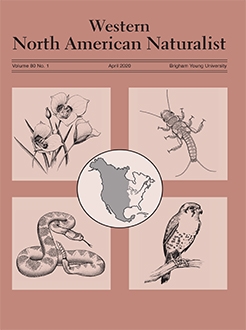Range contractions in the Great Basin over the last century suggest that American pikas (Ochotona princeps) might be highly sensitive to climate change. However, documentation of pikas residing at relatively warm, low-elevation sites has recently shed new light on the possible resilience of pika populations to warmer ambient conditions when they have access to cooler microhabitats for thermoregulation. To provide insight into the possible behavioral mechanisms of adaptation to warmer habitats, we investigated activity patterns, foraging behavior, and space use of a population of pikas living in an atypical, warmer habitat at Craters of the Moon National Monument and Preserve, an extensive lava flow surrounded by high desert grassland and sagebrush communities in southern Idaho. We compared pika behavior at this site to that of a population in a more typical alpine habitat at Grays Peak in the nearby Pioneer Mountains in Idaho. Specifically, we evaluated and compared activity patterns and foraging behavior of pikas in relation to temperature, time of day, and month. Pikas at Craters of the Moon were less active aboveground during all times of the day from late May until mid-August, compared to those at Grays Peak. Surface temperatures were warmer across the entire season at Craters of the Moon than at Grays Peak, and pikas exhibited a crepuscular activity pattern that coincided with variations in surface temperature at Craters of the Moon. Pikas were the least active during the midday, when the surface temperatures were highest and the insulating effect of the lava tubes (i.e., the difference between surface and crevice temperatures) was most pronounced. Pikas at Craters of the Moon spent less time haying and displayed fewer territorial behaviors than pikas at Grays Peak, but both groups filled a similar number of hay piles. The vegetation community was less diverse and sparser at Craters of the Moon than at Grays Peak, and consequently, the vegetation that was consumed and cached reflected these differences. Our results expand the body of literature about American pikas at their environmental limits, and this study is the first step in identifying the unique suite of behaviors that pikas use to persist in a seemingly inhospitable environment at Craters of the Moon.
How to translate text using browser tools
7 April 2020
Activity Patterns and Foraging Behavior of American Pikas (Ochotona princeps) Differ between Craters of the Moon and Alpine Talus in Idaho
Meghan J. Camp,
Lisa A. Shipley,
Johanna Varner,
Brooklyn D. Waterhouse
ACCESS THE FULL ARTICLE

Western North American Naturalist
Vol. 80 • No. 1
April 2020
Vol. 80 • No. 1
April 2020





